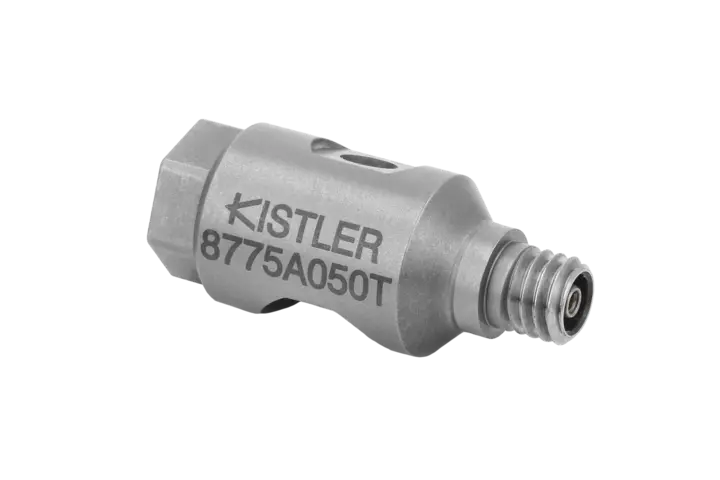Aerospace technology: Thanks to its cylindrical shape, the piezoelectric accelerometer 8775A can be oriented freely in any direction.
During starts and airborne maneuvers, an airplane’s wings and corpus experience acceleration from different angles. Modal analysis simulates the impact that acceleration has on an airplane in ground vibration tests. Choosing the right accelerometers is crucial for achieving precise test results. Working closely with clients, Kistler has recently developed the cylindrical accelerometer 8775A. Used either on its own or mounted into a Delrin mounting block, the accelerometer can be oriented freely in any direction perpendicular to the coaxial connector. It then measures vibration in the direction of the arrow etched onto the surface of the sensor. “The structure of an airplane impacts the direction in which acceleration hits specific parts,” explains Joshua Kasprzyk, Product Manager Acceleration at Kistler. “When you take a wing, for instance, the curved structure affects the angles in which vibration will be seen. When using standard accelerometers with a square package for modal analysis, they can only be oriented towards angled accelerations to a limited extent. Our new sensor offers an optimal solution for this issue.”





![Piezoelectric accelerometer with mounting block for precise modal analysis [object Object]](https://kistler.cdn.celum.cloud/SAPCommerce_Document_Preview/999-236e.webp)
![Bend – but don’t break [object Object]](https://kistler.cdn.celum.cloud/SAPCommerce_Document_Preview/961-609e.webp)